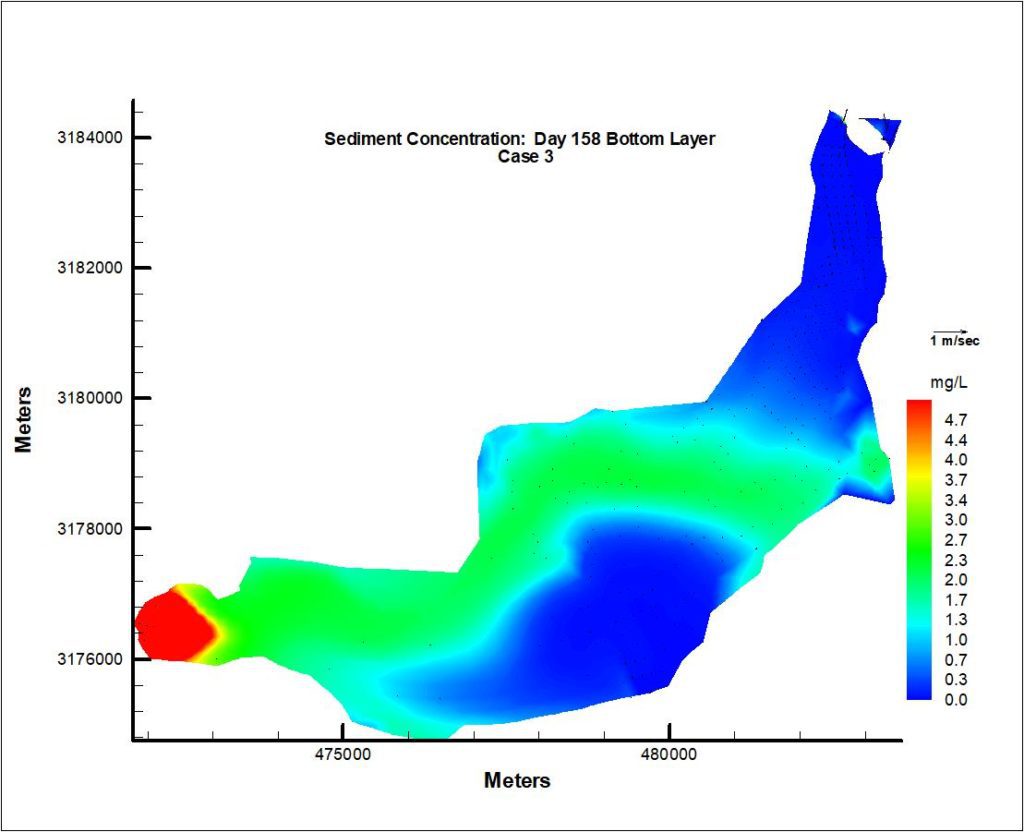Hydrodynamic and Flushing Model of Lake Jesup, FL
The goal of this project was to apply a three-dimensional hydrodynamic model of Lake Jesup to predict the performance of alternatives to improve flushing of the Lake. The model application included four distinct channel configurations at the north boundary of the Lake designed to increase exchange between the Lake and the St. Johns River. Model simulations included numerical Lagrangian drifters specified in the model to track flushing rates, as well as simulations of current velocity to predict circulation patterns. Predictions of sediment transport were also conducted to evaluate the relative rates of sediment flushing among the test cases. Model simulations of the existing conditions were included in the project for comparison to proposed modifications. Results of the model simulations showed that all of the cases tested would substantially decrease the flushing time of Lake Jesup. The key element in all four test cases was the opening of an additional channel, which provided a more direct route for exchange between Lake Jesup and the St. Johns River.
Client:
- St. Johns River Water Management District
Team Members:
- Dr. Gary Zarillo
Services Provided:
- 3-D Hydrodynamic Modeling
- Flushing Rate Tracking
- Circulation Pattern Predictions
- Sediment Transport Predictions

